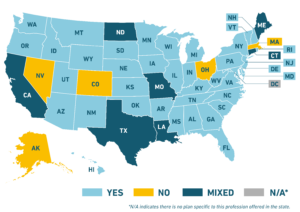
Millions of state agency workers, municipal employees, and police and firefighters across the country do not participate in Social Security. There are 12 states that have totally opted out of Social Security for public sector workers. And another 5 states have allowed local employers to choose whether or not they participate.
In some states, most police participate in Social Security, but firefighters do not. In other states it is the reverse. And in some states, which public sector workers have access to Social Security shifts from city to city and county to county.
Why? When Congress created Social Security in 1935, it excluded state and local workers because of constitutional concerns that the federal government could not tax states and municipalities. In the 1950s, Congress amended the Social Security Act to allow, but not require, state and local governments to enroll their employees. Most states opted in, but some states didn’t and other states left it up to local employer units to choose participation, resulting in their lack of coverage today.
Note that the map above only reflects Social Security participation for state, municipal, and public safety workers. For a map of participation coverage for teachers (which is slightly different) see here.

